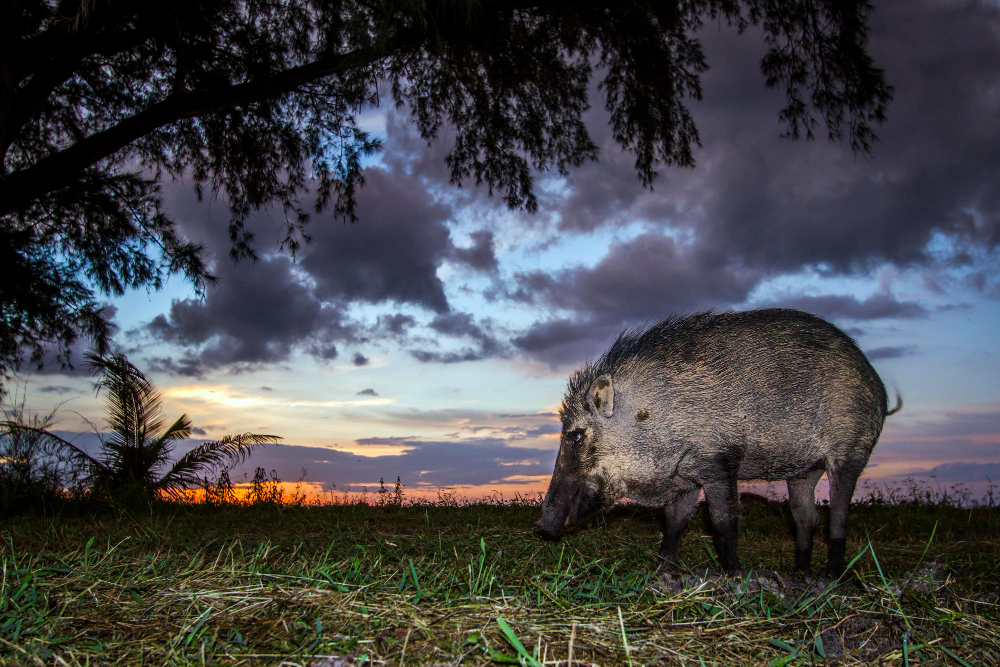Night vs. Light: A Guide to Hog Hunting Tech



Wild hogs are intelligent, adaptable, and primarily nocturnal. This combination makes them a challenging and exciting target for hunters. Their preference for nighttime activity means that to be successful, you need the right technology to see in the dark. For many hunters, this comes down to a choice between two powerful tools: thermal imaging and night vision.
Understanding the differences between these technologies is key to planning effective wild hog hunts in Orlando, FL. Both can give you a significant advantage, but they operate on entirely different principles and offer unique benefits. This guide will explore the mechanics of thermal imaging and night vision, compare their pros and cons, and help you decide which is the best fit for your next hunt. By the end, you'll have a clearer picture of how to equip yourself for a successful nighttime adventure.
Night vision technology works by amplifying small amounts of ambient light. Think of it as giving your eyes a massive boost. Scopes and goggles equipped with night vision collect existing light from sources like the moon and stars, convert the photons into electrons, and then amplify those electrons to create a visible, typically green-hued image.
This technology has been around for decades, originally developed for military use. Modern advancements have made it more accessible and effective for civilian activities like hunting. Because it relies on amplifying light, its performance is directly tied to how much ambient light is available. On a bright, moonlit night, a night vision device can provide a crisp and detailed view of your surroundings. However, on a cloudy, moonless night, the image quality will be significantly reduced.
Thermal imaging operates on a completely different principle. Instead of amplifying light, it detects infrared radiation, or heat. Every object with a temperature above absolute zero emits thermal energy. A thermal scope captures this energy and translates it into a visible image, where warmer objects appear brighter (often white, yellow, or red) and cooler objects appear darker (black or blue). This is why it's often called "thermal vision."
This technology allows you to see heat signatures, making it exceptionally effective for detecting living creatures. A warm-blooded animal like a wild hog will stand out brightly against the cooler temperature of the surrounding trees, grass, and ground, regardless of light conditions. Fog, smoke, and camouflage that can obscure an animal from night vision are no match for thermal imaging.
When it comes to wild hog hunts in Orlando, FL, the choice between thermal and night vision often comes down to your primary goal: detection or identification.
For pure detection, thermal imaging is the undisputed champion. The ability to scan a field and instantly see every warm-blooded creature within range is a massive advantage. Wild hogs often move in groups, and a thermal scanner can help you spot the entire sounder from a distance, even if they are partially obscured by vegetation. This makes finding your targets significantly faster and more efficient.
On the other hand, if you prioritize positive identification and a more natural view of your environment, night vision can be a solid choice, especially on nights with good moonlight. Being able to clearly see the details of the hog and its surroundings can give some hunters more confidence before taking a shot.
Many experienced hog hunters use a combination of both technologies. They might use a handheld thermal monocular to scan for targets efficiently. Once a heat signature is detected, they switch to a rifle-mounted night vision scope for a more detailed look and precise shot placement. This "best of both worlds" approach leverages the strengths of each technology.
However, if you have to choose just one for hunting wild hogs, most seasoned hunters will recommend thermal. The detection advantage is simply too great to ignore, especially in the dense and varied terrain often found in Florida.
Choosing the right technology can make all the difference between a frustrating night and a successful hunt. Both thermal imaging and night vision are powerful tools that open up the world of nocturnal hog hunting, but for spotting elusive hogs quickly and effectively, thermal imaging generally holds the edge.
Ready to put this knowledge to the test? Planning wild hog hunts in Orlando, FL requires local expertise and access to prime hunting grounds. At Switchgrass Outfitters, we provide guided hunts equipped with the latest technology to give you the best possible experience. Our expert guides will help you navigate the terrain and master the equipment, ensuring a safe and thrilling adventure.
If you're interested in booking a wild hog hunt in the Orlando, FL area, contact Switchgrass Outfitters today for booking information and get ready for the hunt of a lifetime.